A BIRTHDAY SALUTE to one of comics’ most acclaimed writers, born 64 years ago, on Jan. 31, 1960…
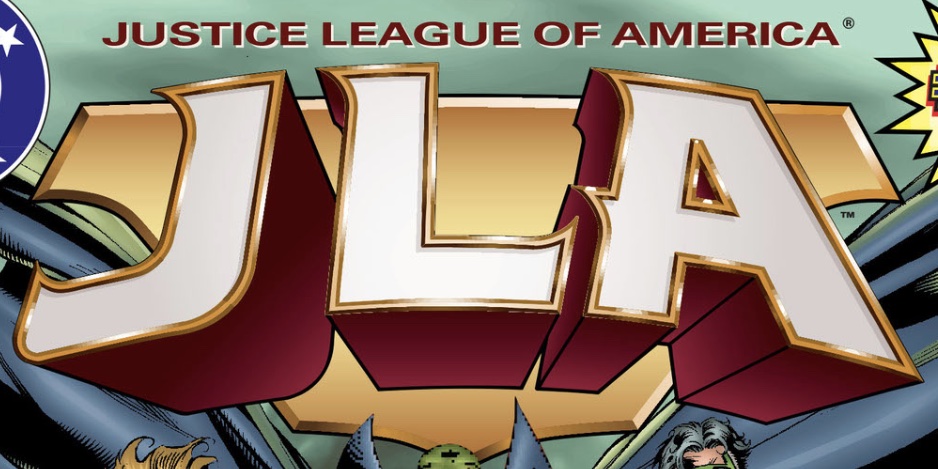
By SCOTT TIPTON
Back in the mid-to-late 1990s, the Justice League was in serious trouble. After years of malaise and lack of direction following the end of the wonderful Justice League International era, the JLA franchise was in desperate need of a shot of adrenalin and a return to greatness — which was what we got thanks to the man whose birthday we celebrate, Grant Morrison.
The stage was set for Morrison’s debut with a JLA miniseries titled Midsummer’s Nightmare, written by Mark Waid and Fabian Nicieza, which reunited the original Big Seven (Superman, Batman, Wonder Woman, Flash, Aquaman, Green Lantern and Martian Manhunter) after years of the team being made up of nobodys, also-rans and second fiddles.
If Waid and Nicieza opened the door for the new JLA, Morrison marched right through it and claimed the joint for his own. Morrison’s approach to the series can best be described as “powerplotting” – Morrison crams many ideas and concepts into a storyline (enough that lesser writers would use for two or three story arcs), then moves the story forward at breakneck speed, carrying the reader along for the ride with a whirlwind sense of feet-off-the-floor excitement.
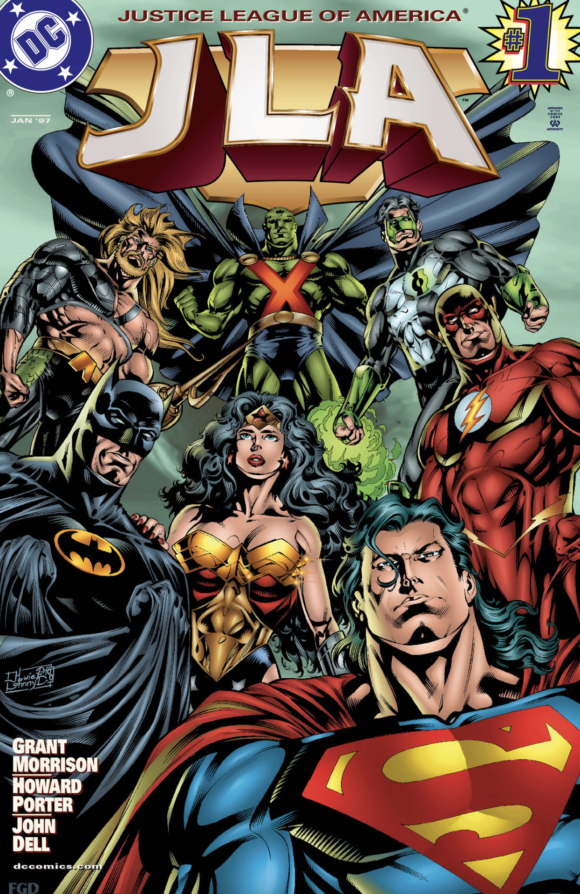
Accentuating the process was JLA artist Howard Porter, whose modern, fluid style gave the team a vitality it had lacked for years. Between Morrison’s scripts and Porter’s images, this was a JLA that seemed to readers to be all new, while Morrison still managed to keep the book steeped in a slightly Silver Age sensibility, with a 21st-century sheen to it. Morrison also returned the series to its epic Silver-Age proportions, with the League facing world-shattering threats that none of them could handle alone.
Morrison had a lot of characterization to establish in his first storyline, and he did a marvelous job of it. Superman and Wonder Woman stand out as the team’s pillars of strength, while J’onn remains the heart of the team. Aquaman is portrayed as the distracted monarch unhappy with constantly being called away from his people, while Flash and Green Lantern’s love-hate relationship (early on, mostly hate) serves as enjoyable comic relief.
Kyle’s constant nervousness as he slowly grows out of his role as the team’s rookie would prove to be one of the most satisfying character bits (and truth be told, his portrayal here would be the factor that would finally allow me to turn the corner on accepting Kyle as the new Green Lantern).
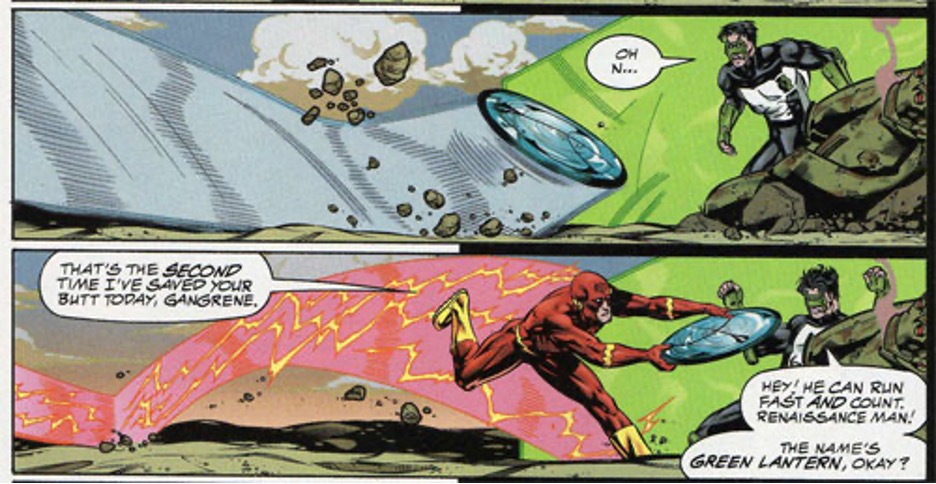
Morrison’s use of Batman was genius. It was here that the idea of the Dark Knight being such a master planner that he could out-strategize everyone and anyone, including the League, really took root. Morrison’s Batman is a perpetually irritated, distracted mastermind, always three steps ahead of the rest of the team. I think it was Morrison who said that he thought Batman could take out Galactus if he had a week to plan. Under Morrison’s pen, Batman also developed an odd affectation of making this weird grunt of acknowledgment or satisfaction: “HH.”

An aside: the first summer after Grant Morrison’s JLA really hit it big, he attended San Diego Comic-Con, and I remember being in a packed panel where someone asked him what that weird noise was Batman was making now. Morrison demonstrated the noise, a guttural kind of breathy grunt. Why was he doing that, another fan asked. Morrison’s response? “It just seemed like an odd, scary thing for Batman to do. Come on, everyone do it with me!” The crowd played along, and the room rang out with a resounding grunt. Morrison: “Someone just walked into the back of the room and said to himself, ‘Aaaah! It’s 300 Batmen!’”
Grant Morrison and Howard Porter’s first arc was a winner; sharply written and exciting, a welcome return to greatness for the Justice League series: The League must contend with the Hyperclan, a newly arrived alien superteam who swiftly earn the world’s affections with their good deeds. The JLA soon discovers the Hyperclan’s secret: They’re White Martians, and the first wave of an invasion force!
The good news was, Morrison and Porter were just getting warmed up. As the series progressed, Morrison would have grand ambitions of expanding the team like never before. But why?
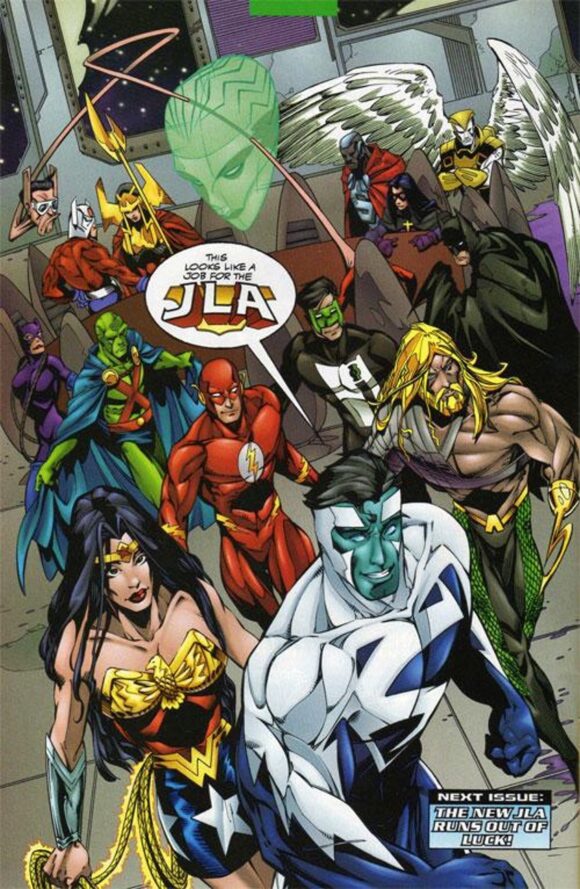
In the months leading up to the debut of the expanded team, Morrison discussed his idea of treating the Justice League like the pantheon of Greek gods, watching over mankind from Olympus, i.e., the Watchtower, to extend the metaphor. While he never expressly delineated which character lined up with which deity (not that fandom didn’t bend over backwards trying to make the connections themselves, particularly before the new membership was announced), it was an interesting tack to take.
There were also undoubtedly some simple narrative reasons for expanding the team. Since the full membership didn’t have to be used in every issue, it allowed for the use of specific Leaguers for specific missions, as well as a greater variety of characterization, much as in the team’s heyday in the 1970s.
Let’s take a look at who was in the new lineup, and explain and/or speculate as to why they made the cut:
The original, classic Leaguers — Superman, Batman, J’onn J’onzz, Flash, Green Lantern and Aquaman — naturally retained their spots in the new group, whether they were legacy characters or the originals. Also stepping in as the new Wonder Woman was Hippolyta, Princess Diana’s mother, who had assumed the role in the Wonder Woman solo series after Diana’s death and ascension to godhood.
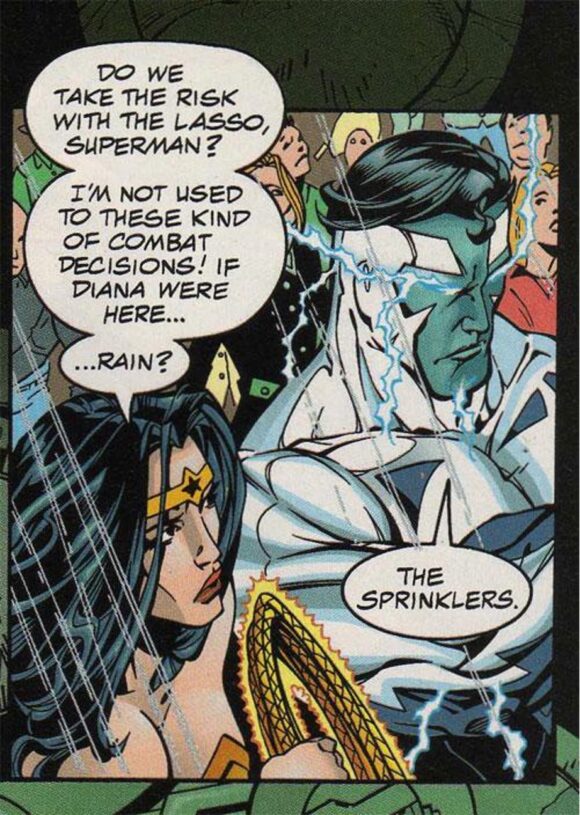
The use of Hippolyta as Wonder Woman was one of my favorite aspects about John Byrne’s Wonder Woman run, particularly the way he sent her on a trip into the past to take up membership in the Justice Society during World War II, finally closing up the pesky hole in the continuity regarding Wonder Woman’s status in the JSA post-Crisis on Infinite Earths. So the Big Seven remained set firmly in place, but who else received the call?
Zauriel, Morrison’s angelic creation from earlier in his JLA run was inducted in a move most fans thought was made as a placeholder for Hawkman, who was at the time considered radioactive by DC editors due to countless continuity reboots and declared off limits. Other than the wings, though, Zauriel and Hawkman don’t really have that much in common, and Zauriel’s addition to the team instead brought with it more of a much-needed sense of innocence and naivete to the group dynamic.
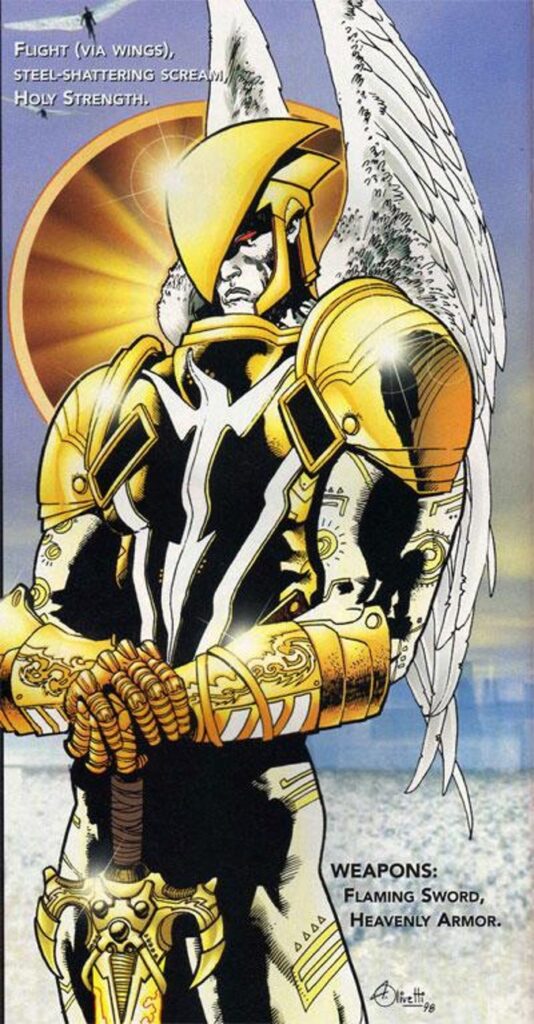
Zauriel was also given a snazzy new set of armor, which gave him a bit more of a superheroish look, as opposed to the loincloth and neckerchief he was sporting in his first appearance. In a nice bit of characterization, Zauriel was also given responsibility for the JLA Trophy Room, citing angels’ inherent appreciation for documentation in a sweet little four-page story by Mark Millar and Christopher Jones that appeared in JLA Secret Files & Origins #2.

A controversial choice at the time was Plastic Man, given the nod for membership over longtime JLA member Ralph Dibny, a.k.a. the Elongated Man. While in the context of the story it was explained by Superman that Plastic Man “had more versatility,” the real truth of Plas’ inclusion is a bit more capricious. Grant Morrison just liked him better, thinking that Ralph Dibny was merely a copy of the original stretching superhero, and now that Plas was owned by DC, there was no reason why he shouldn’t displace his doppelganger in the Justice League. It was also very apparent that, from a narrative perspective, Plas’ role on the team was pretty clear: comic relief, and there’s nothing wrong with that.
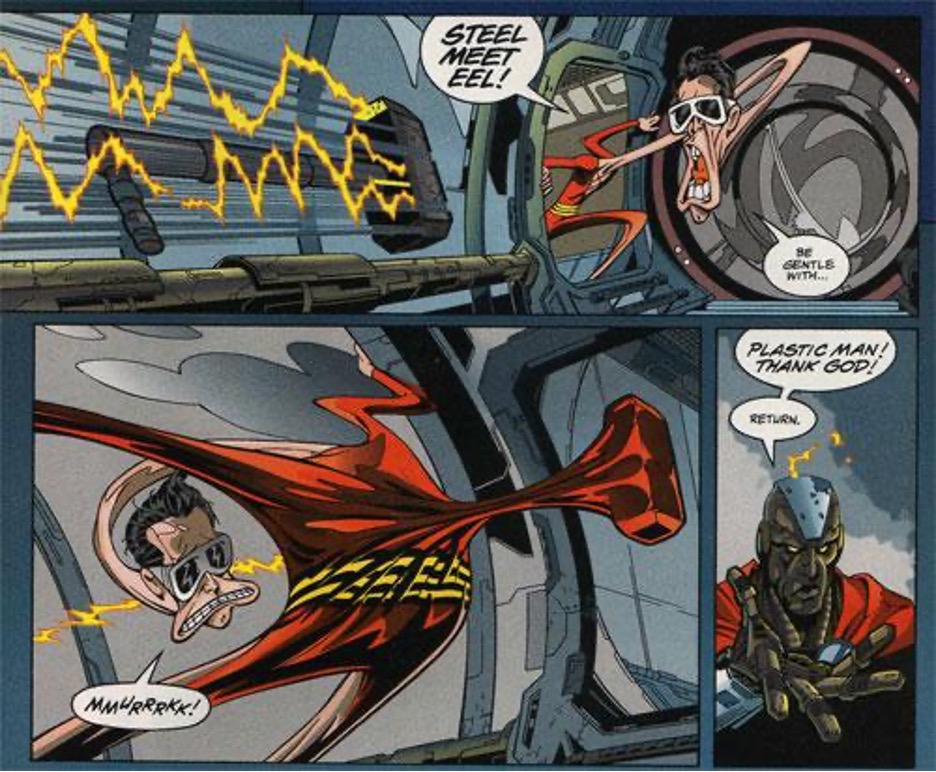
I’m just such an old-school JLA fan that it always seems weird to me to see a stretchy dude in a JLA shot and see that it’s Plastic Man and not Ralph. I’ll also admit that Plastic Man’s ability to completely change his form into everyday objects (albeit red and black-and-yellow-striped everyday objects) added a lot of visual flair to the book, as well as an overall novelty that didn’t quickly wear out its welcome.
Probably the best of Morrison’s new recruits was Steel, the armored inventor John Henry Irons who found himself stepping in for Superman when the Man of Steel was temporarily deceased. The reason for Steel’s inclusion was illuminated by Morrison himself one year at a panel at San Diego Comic-Con. As he was comparing the JLA to Marvel’s Avengers, he explained, he realized that there was one thing the Avengers had the JLA didn’t and never had: Iron Man. And not specifically Iron Man, but that kind of character archetype, the fighting scientist, the armored hero.
So, he continued, he looked at the DC catalogue of characters – “Does DC have any character that fits that description?” And there was Steel. Even better, with his being partially based on Superman, the character had enough of that “legendary” status that you could buy him being important enough to be a member of the JLA, but wasn’t so much like Superman from a conceptual standpoint that it felt redundant having them both on the team.

I also found it refreshing that the Justice League finally had a Black character in a significant (and occasionally leadership) role, and mention of his race was, to my knowledge, never even made. Unlike the days of Black Lightning calling the Leaguers “jive turkeys,” Steel was treated with respect and came across as a member who belonged almost immediately. In fact, in later issues, even without much fanfare, Steel was treated as the de facto leader of the League in Superman’s absence, I think partly due to the strength of character Morrison imbued him with. Morrison’s approach to handling Steel gave me a much greater appreciation of the character, and it’s been a little disappointing to see how he’s been used so inconsistently since.
Another unusual choice for League membership was the Huntress, a.k.a. Helena Bertinelli, the Gotham City vigilante often on the receiving end of Batman’s disapproval and scorn. Taking the place of the departed Green Arrow Connor Hawke (who had briefly filled in for his then-deceased father Oliver Queen earlier in Morrison’s run), the Huntress was added to the team for several reasons, it seems to me. First off, it’s always a good idea to get more women on the team, yet DC doesn’t have that many truly “iconic” female characters.
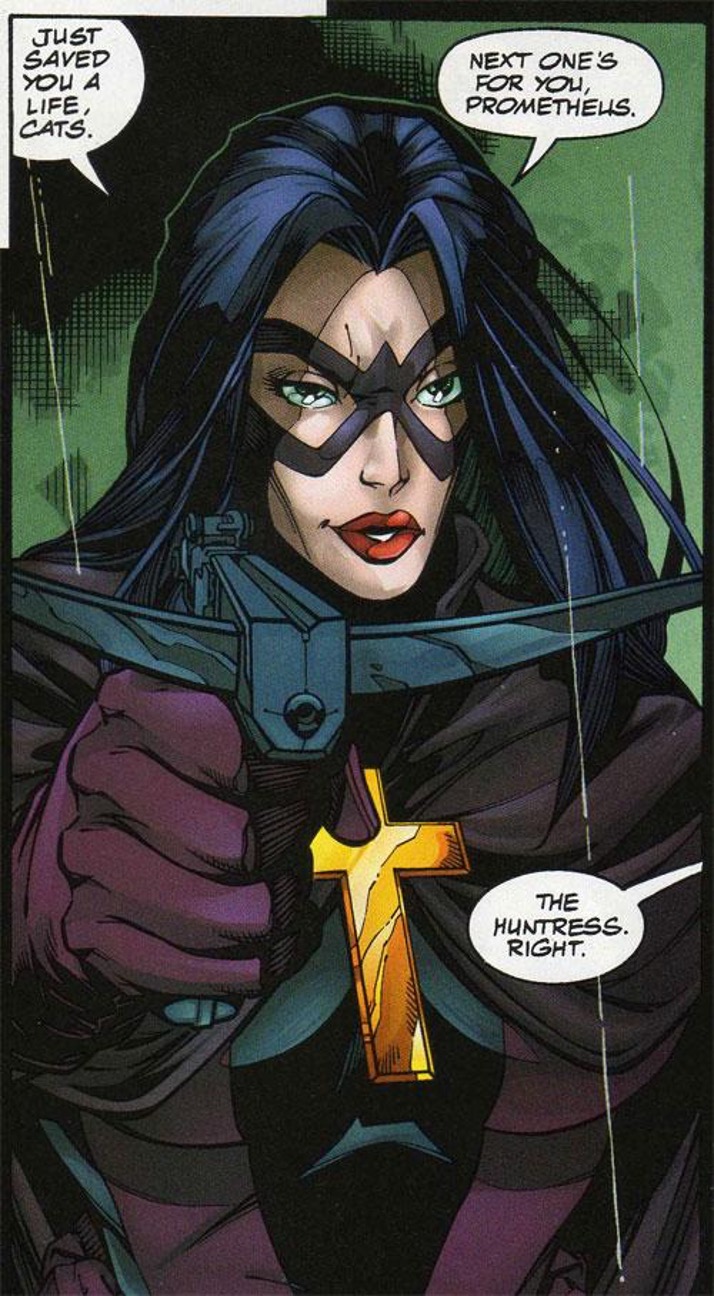
Also, introducing the cynical, suspicious and sarcastic Huntress lent the team a little bite as she occasionally rubbed her fellow Leaguers the wrong way, particularly Plastic Man. Batman, who had up to this point allowed Huntress to operate in Gotham despite his disapproval of her methods and doubt in her abilities, inducted the Huntress in the hopes that training and working alongside the more experienced Leaguers might teach her the value of restraint. And there may have been another reason as well, as revealed in a later JLA issue, as Bruce Wayne discusses League business with Clark Kent and a disguised J’onn J’onzz: to serve as Batman’s eyes within the Justice League.
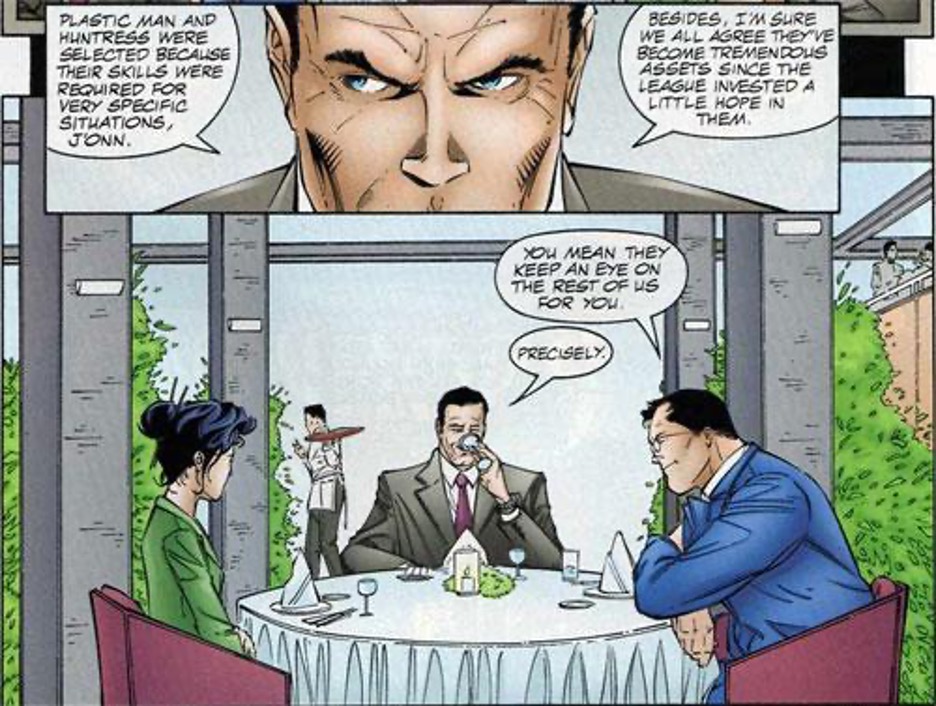
The last of the initial new recruits was another selection by Batman, Oracle, the virtual identity of ex-Batgirl Barbara Gordon, still fighting evil and corruption despite having been paralyzed by the Joker’s bullet. In her role as computer whiz without parallel, Oracle had already carved out a crimefighting career for herself as researcher and online advisor for Batman and his crew, as well as sending her own agent Black Canary on clandestine missions, as chronicled in their solo series Birds of Prey.

In her new role with the JLA, Oracle serves as “Data Central” for the Justice League, coordinating their missions and providing necessary background data and counsel. To protect her identity even from the team, all communications are conducted through a holographic mask.
The new members are introduced at a gala press conference at the Watchtower in JLA #16-17, an event sadly interrupted by the League’s newest enemy Prometheus, a kind of anti-Batman whose criminal parents were killed by policemen, and who has dedicated his own life to avenging their deaths, with the help of decades of physical training, as well as a computerized helmet and costume that links directly to his nervous system and allows him to preprogram specific defenses for any foe.
Prometheus infiltrates the Watchtower along with the slew of reporters for the press conference, and does a pretty good job of taking apart the new League, including temporarily taking control of Steel’s armor and actually defeating the Batman in hand-to-hand combat, which a chagrined Batman can only describe as “a humbling experience.”
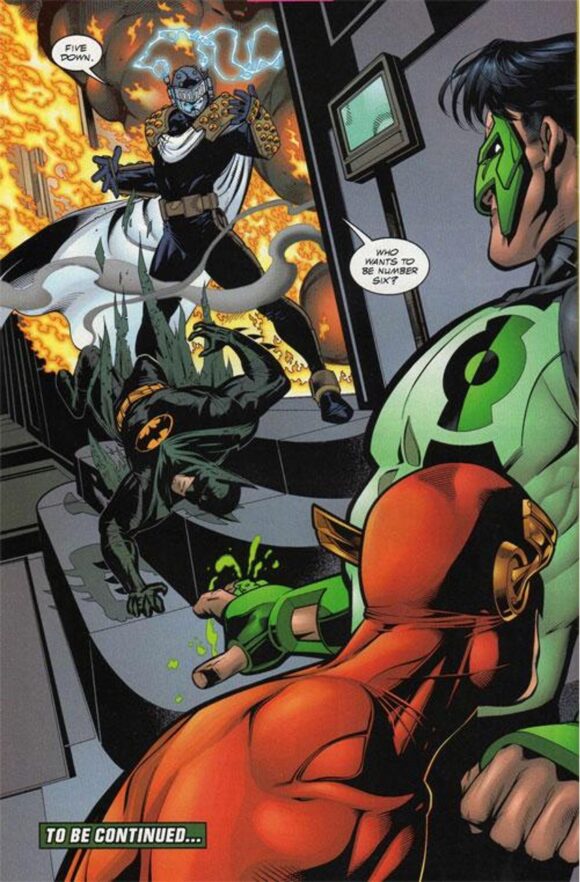
Before long, Leaguers old and new regroup and turn the tide, forcing Prometheus to retreat.
And even before the new Justice League can catch its breath, they’re met with more unexpected visitors: the New Gods Orion and Big Barda, who have been assigned by Highfather to take up membership in the Justice League to assist in the forthcoming catastrophe that Metron had earlier warned them of. Despite some misgivings, Superman accepts them on the team, particularly with former Leaguer Barda’s assurances that she’ll keep the famously temperamental Orion (son of Darkseid, don’t you know) civil.
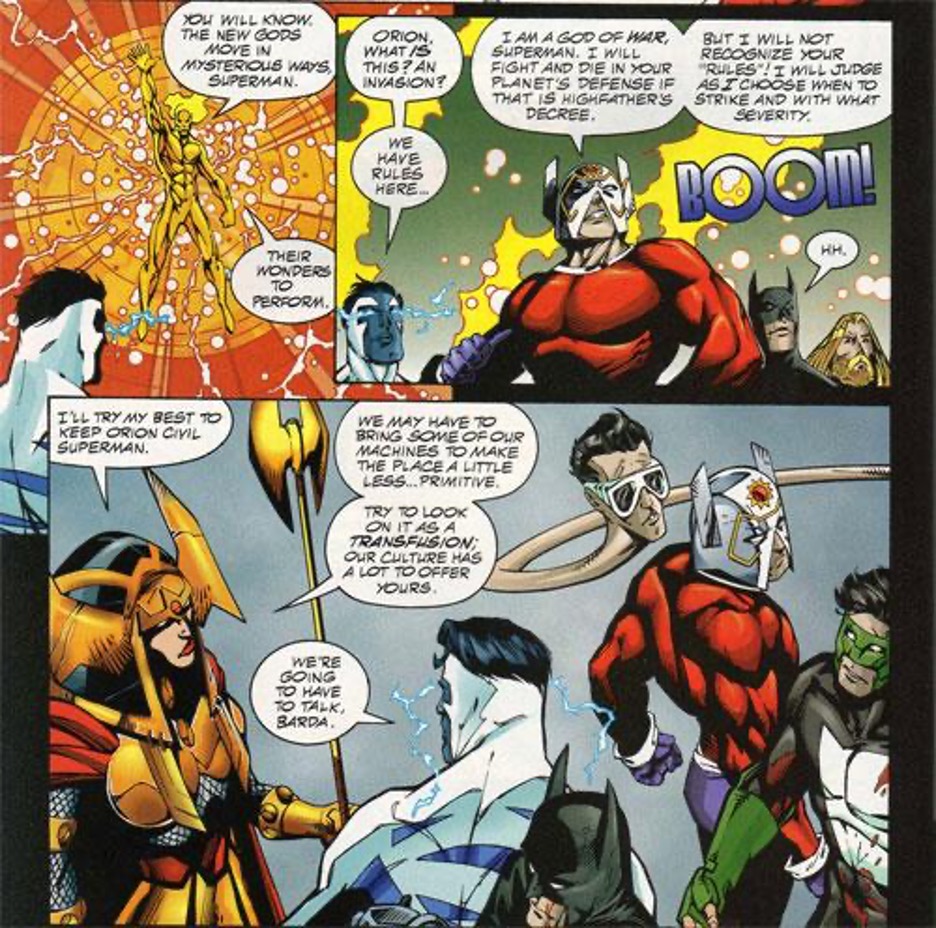
This new lineup made the League feel truly mythic in a way it hadn’t to me since the Bronze Age days of the Satellite-Era JLA, and I don’t think anything has really lived up to it since. You can get the complete Grant Morrison JLA work in a single omnibus these days, and I can’t recommend it highly enough.
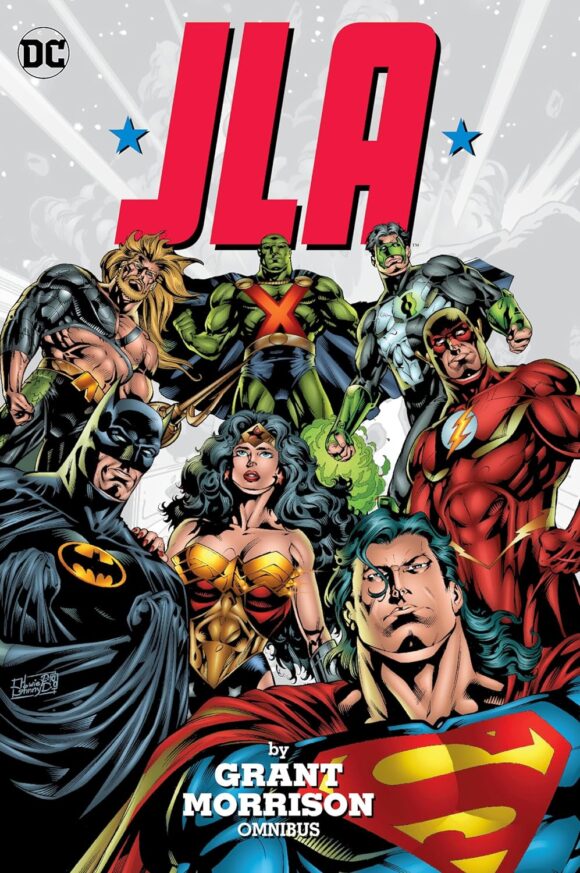
—
MORE
— 13 COVERS: GRANT MORRISON’s BATMAN Influences. Click here.
— A GRANT MORRISON Theory: How DARKSEID Created BATMAN (Sort Of). Click here.
—
Scott Tipton is 13th Dimension’s longest-tenured contributor-at-large. He’s best known as the writer of scores of Star Trek comics published by IDW.

January 31, 2024
Not a JLA I would recognize. I can honestly say I didn’t read 1 issue of that run.
January 31, 2024
I have to agree with this post Morrison definitely breathed much needed life into the JLA, I was so fed up with the Maguire Justice League international slapstick comedy era it got real old really fast and made the league a joke no pun intended, Morrison also made Batman more of a badass than any other writer and I can’t thank that dude enough because whether you want to acknowledge it or not Batman is the most marketable comic book character out there which is why wherever you turn he’s there with a new movie, new actor and new comic series, comics today have considerably lost what made them special in the first place and someone has to correct that mistake quickly.
February 1, 2024
You’re missing out. It was a great mix of silver and modern age sensibilities
February 1, 2024
Give me one story in the run to check out. I’m willing to admit I might have been wrong to avoid it.
February 1, 2024
The first arc is fantastic. My personal favorites are Rock of Ages and Crisis Times Five.
January 31, 2024
Uu
February 1, 2024
It was a great run of comics, and brought the grandeur back to the League. I wish some of the 90s-ness of things hadn’t been forced on Morrison (Super-Mullet, Electric Blue Supes, etc.), but overall, it’s one of of my favorite JL runs.
February 1, 2024
Morrison is a person, not a man, from what I’ve heard about them in recent years.
February 1, 2024
Morrison made Electric Blue Superman badass, something the MAN OF STEEL books couldn’t even pull off.
And Grant brought Plastic Man back t the A-list befitting a classic DC character that goes back as far as Wonder Woman, Captain Marvel and Batman.
A+ stuff.
February 1, 2024
I miss the time when a series wasn’t just a long prelude to an event, which then would spin-off into another series that would be a long prelude to the next event, ad infinitum.
Morrison’s JLA **was** the event, every single month.